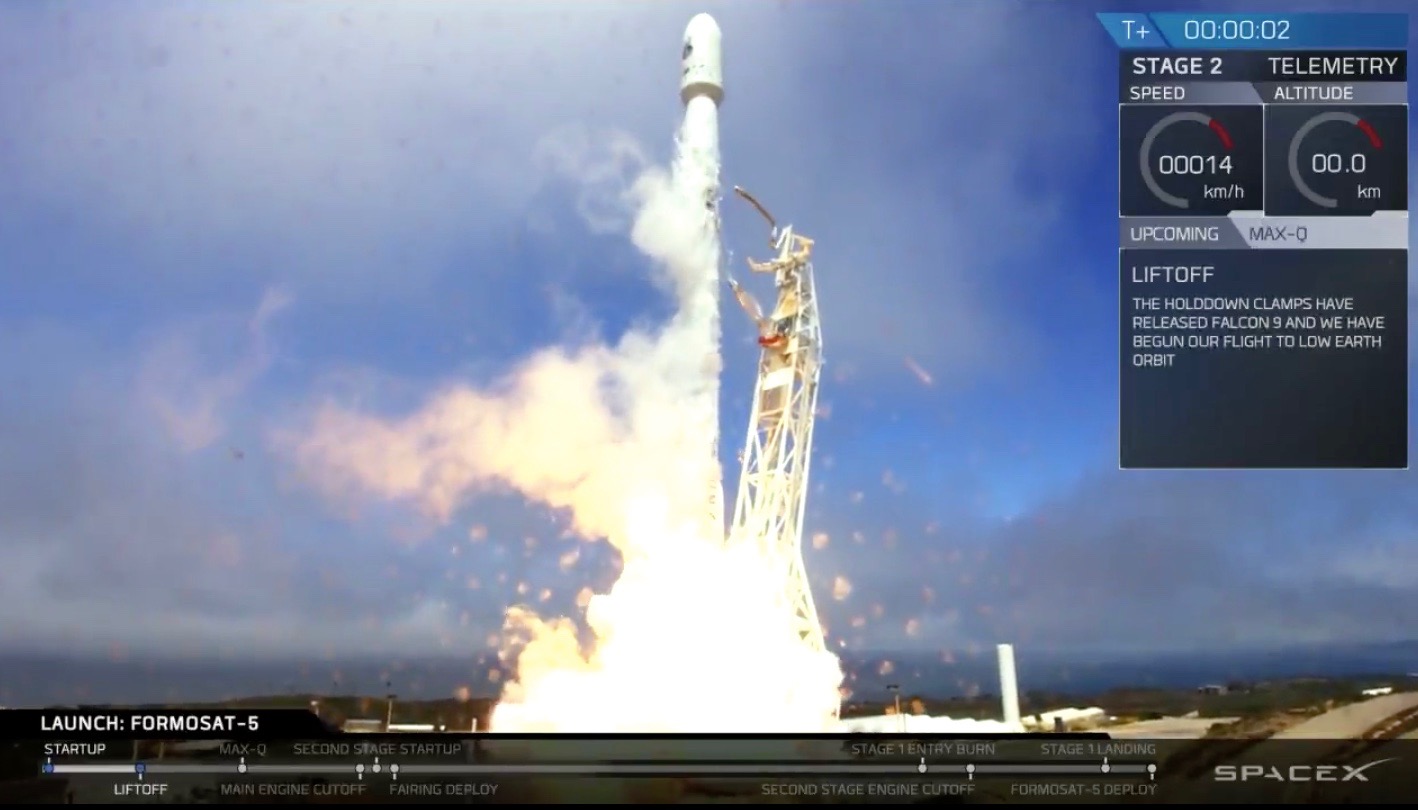SpaceX Launches Earth-Observing Satellite, Lands Rocket on Ship at Sea
A SpaceX Falcon 9 rocket successfully launched a Taiwanese Earth-observation satellite today (Aug. 24) and then came back down for a pinpoint landing on a ship at sea.
The two-stage Falcon 9 lifted off from Vandenberg Air Force Base in California at 2:51 p.m. EDT (1851 GMT; 11:51 a.m. local time), hauling the Formosat-5 spacecraft into the heavens.
About 2.5 minutes after launch, the rocket's two stages separated. The second stage continued carrying Formosat-5 toward its prescribed orbit, and the first stage performed a series of maneuvers to head toward the SpaceX drone ship "Just Read the Instructions," which was stationed in the Pacific Ocean. [Watch: Awesome Supercut of 5 SpaceX Rocket Landings]
The booster aced its landing, settling softly on the ship's deck a little less than 11 minutes after taking off.
Such dramatic touchdowns are getting to be somewhat routine for SpaceX: Today's was the 15th that the company has pulled off during orbital launches, and the ninth to take place on a drone ship. The other six rocket landings have occurred at "Landing Zone 1," a SpaceX facility at Cape Canaveral Air Force Station in Florida.
These activities are part of SpaceX's effort to develop reusable spaceflight systems, which company founder and CEO Elon Musk has said could slash the cost of space exploration. SpaceX has already re-flown two used Falcon 9 first stages, and it has also employed the same robotic Dragon cargo capsule on two separate resupply flights to the International Space Station. (The Falcon 9 that took off today, however, was entirely new.)

But getting Formosat-5 aloft was the main point of today's mission. The satellite, which was built by Taiwan's National Space Organization, will study Earth for at least five years, from a sun-synchronous orbit 447 miles (720 kilometers) above the ground.
Get the Space.com Newsletter
Breaking space news, the latest updates on rocket launches, skywatching events and more!
The main payload of Formosat-5 is an optical "Remote Sensing Instrument," which will provide 6.5-foot (2 meters) resolution for black-and-white images and 13-foot (4 m) resolution for multi-spectral color images, SpaceX representatives wrote in a mission overview.
"Formosat-5 also hosts a secondary scientific payload, an Advanced Ionospheric Probe (AIP), developed by Taiwan's National Central University," they added.
Follow Mike Wall on Twitter @michaeldwall and Google+. Follow us @Spacedotcom, Facebook or Google+. Originally published on Space.com.
Join our Space Forums to keep talking space on the latest missions, night sky and more! And if you have a news tip, correction or comment, let us know at: community@space.com.

Michael Wall is a Senior Space Writer with Space.com and joined the team in 2010. He primarily covers exoplanets, spaceflight and military space, but has been known to dabble in the space art beat. His book about the search for alien life, "Out There," was published on Nov. 13, 2018. Before becoming a science writer, Michael worked as a herpetologist and wildlife biologist. He has a Ph.D. in evolutionary biology from the University of Sydney, Australia, a bachelor's degree from the University of Arizona, and a graduate certificate in science writing from the University of California, Santa Cruz. To find out what his latest project is, you can follow Michael on Twitter.









